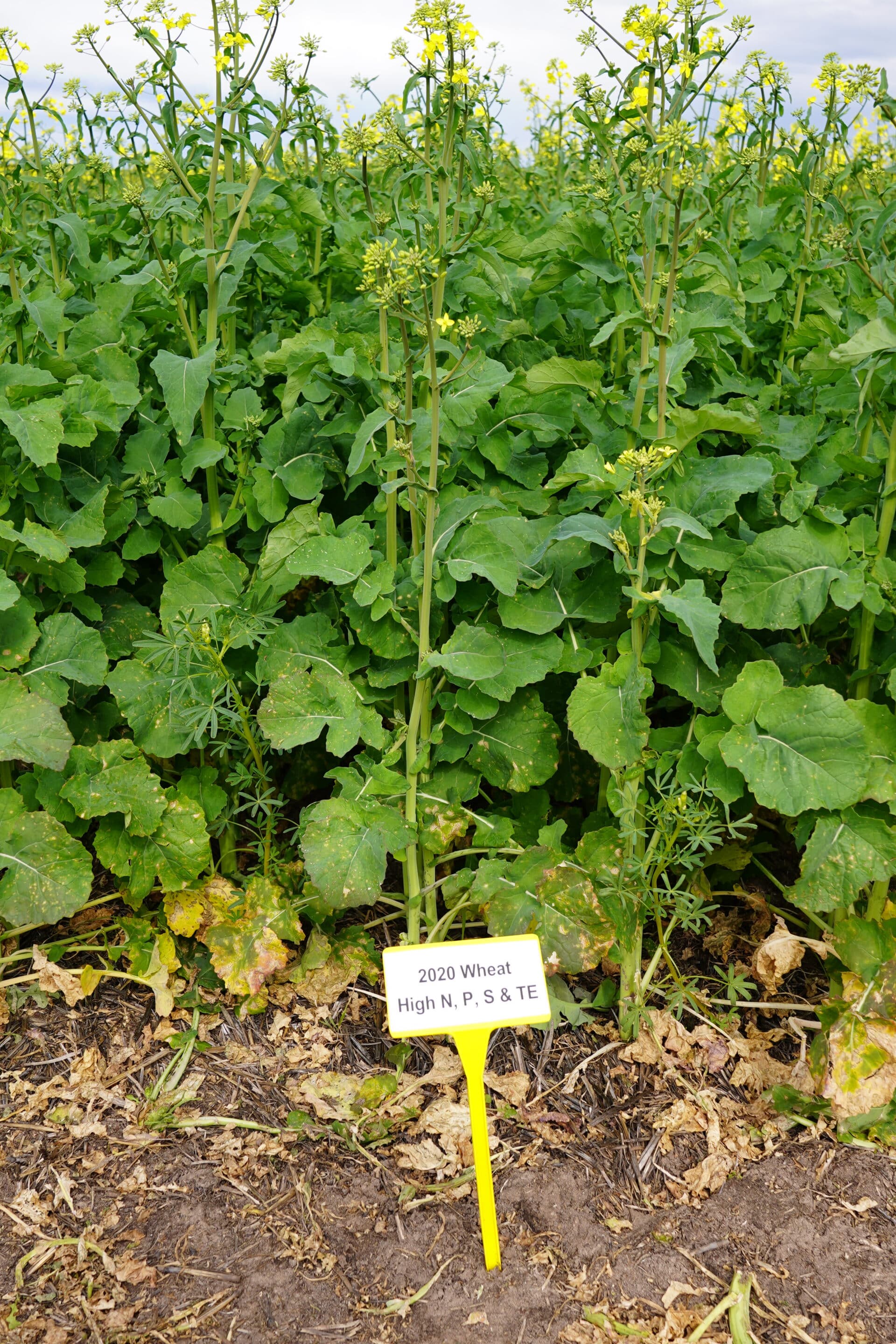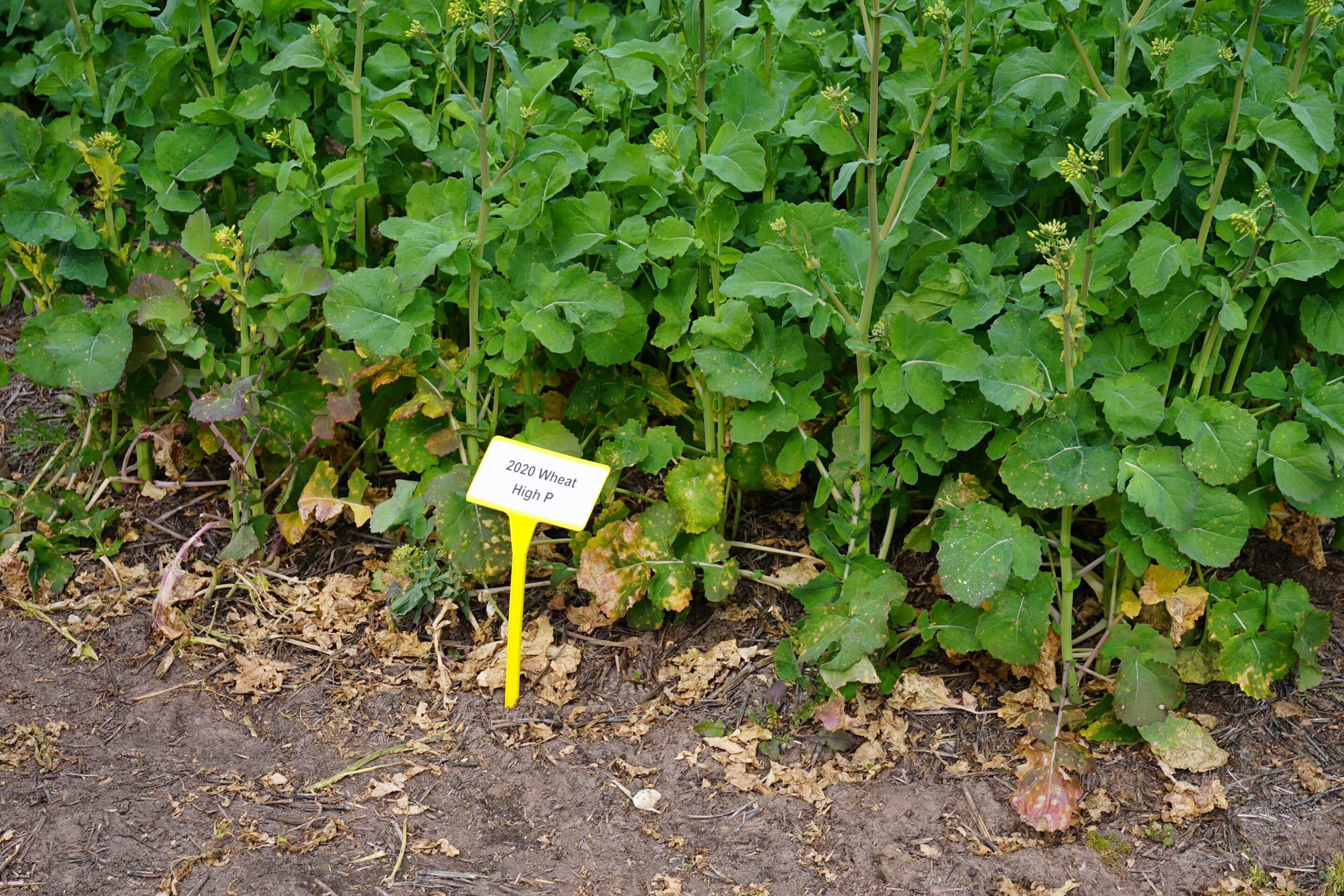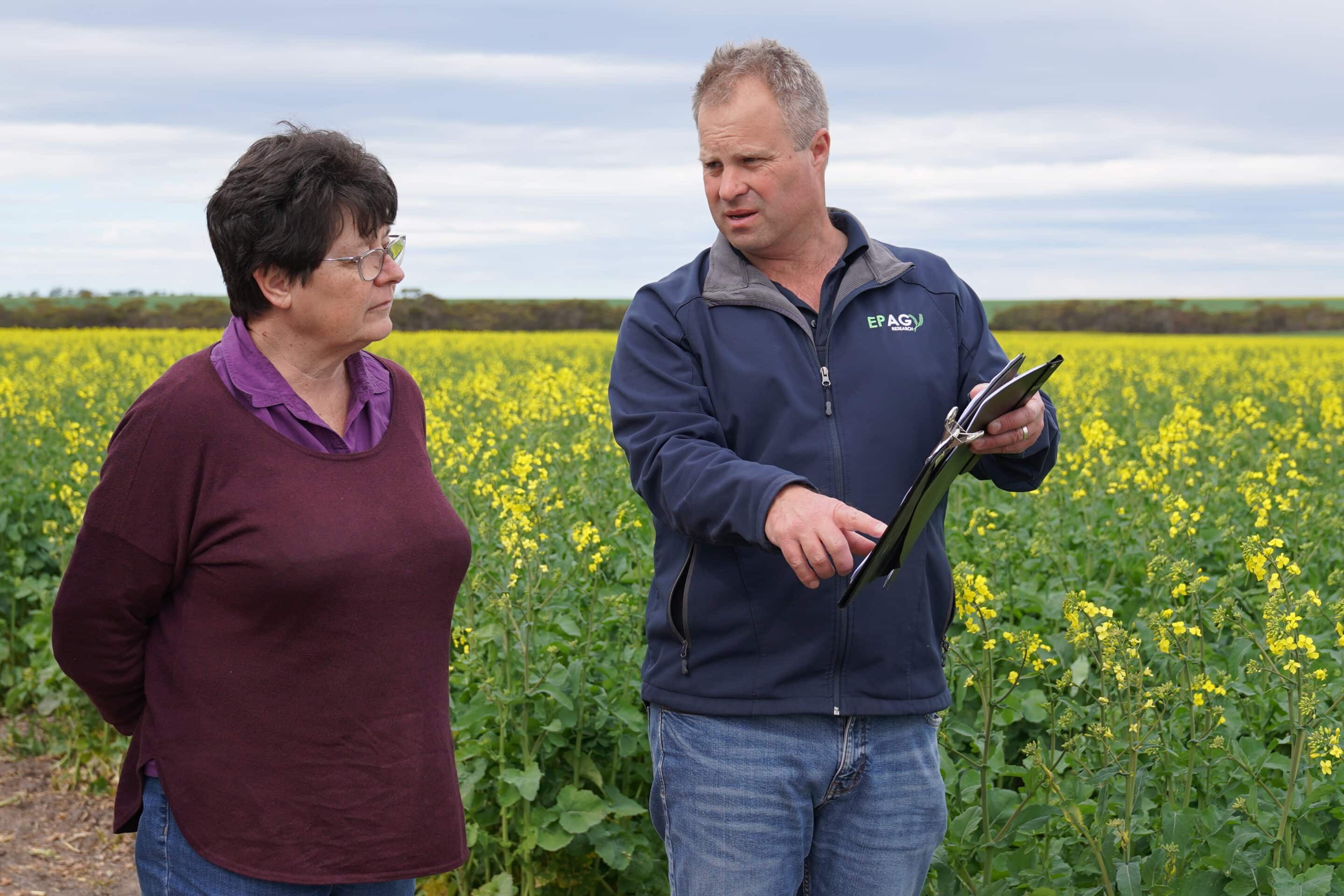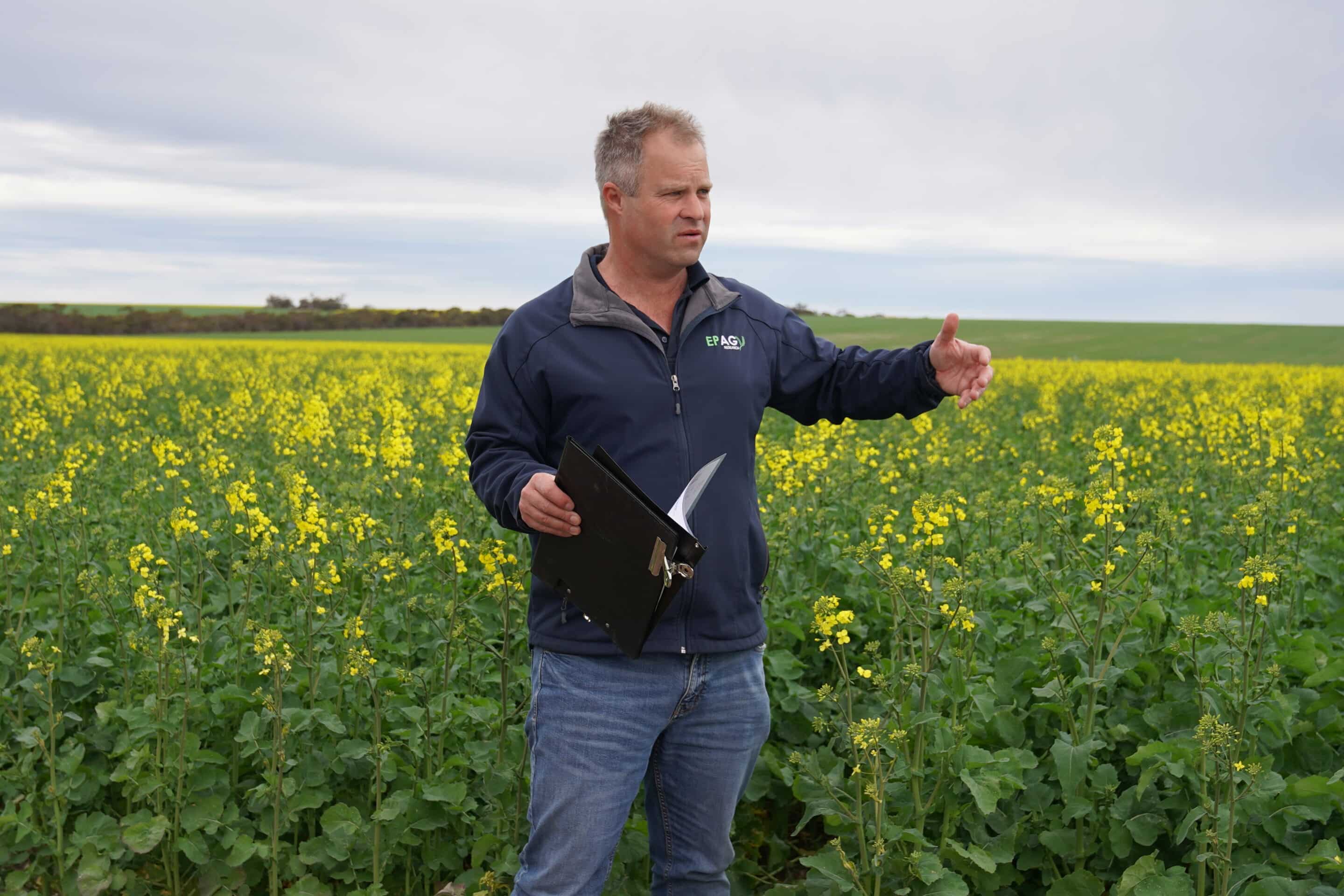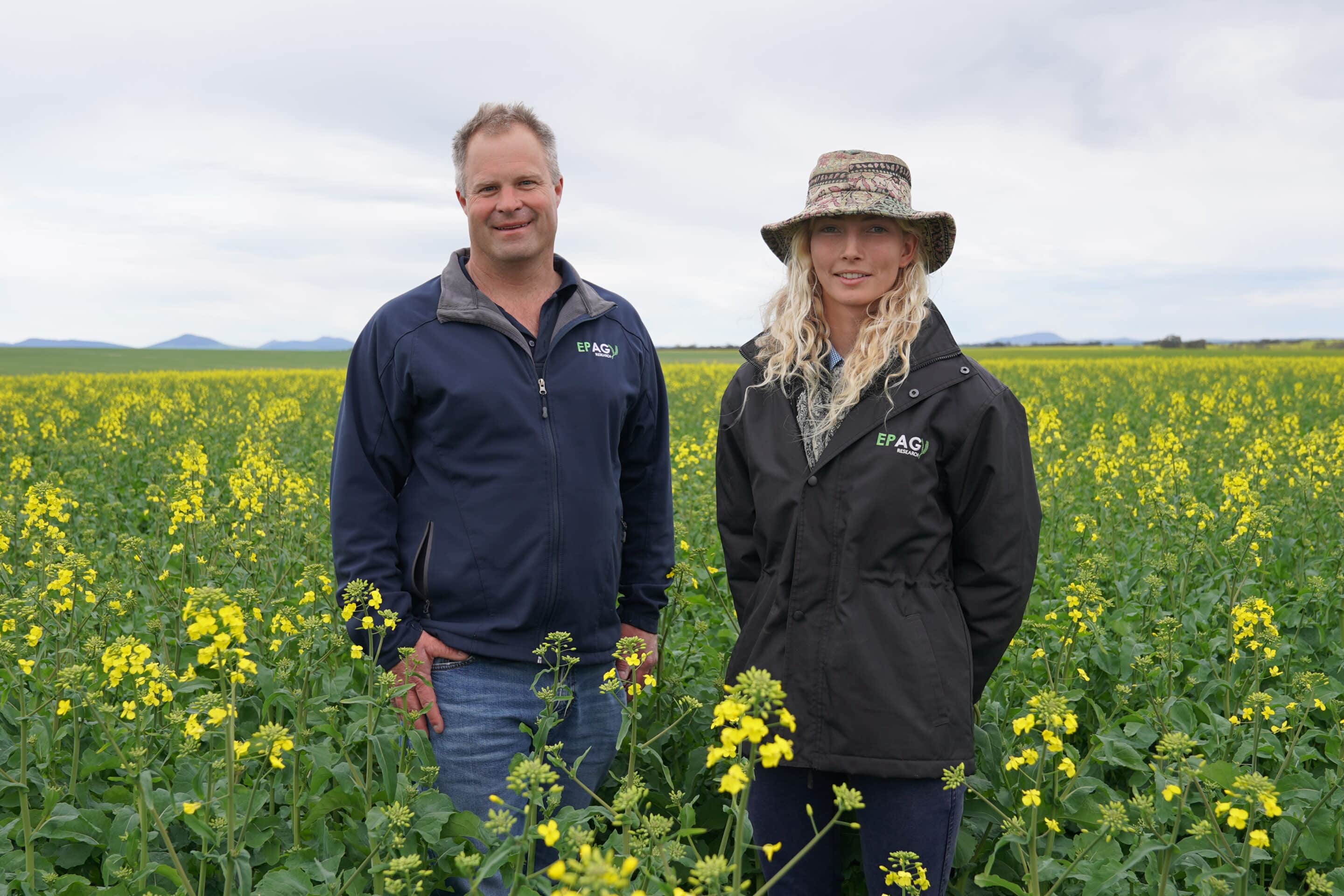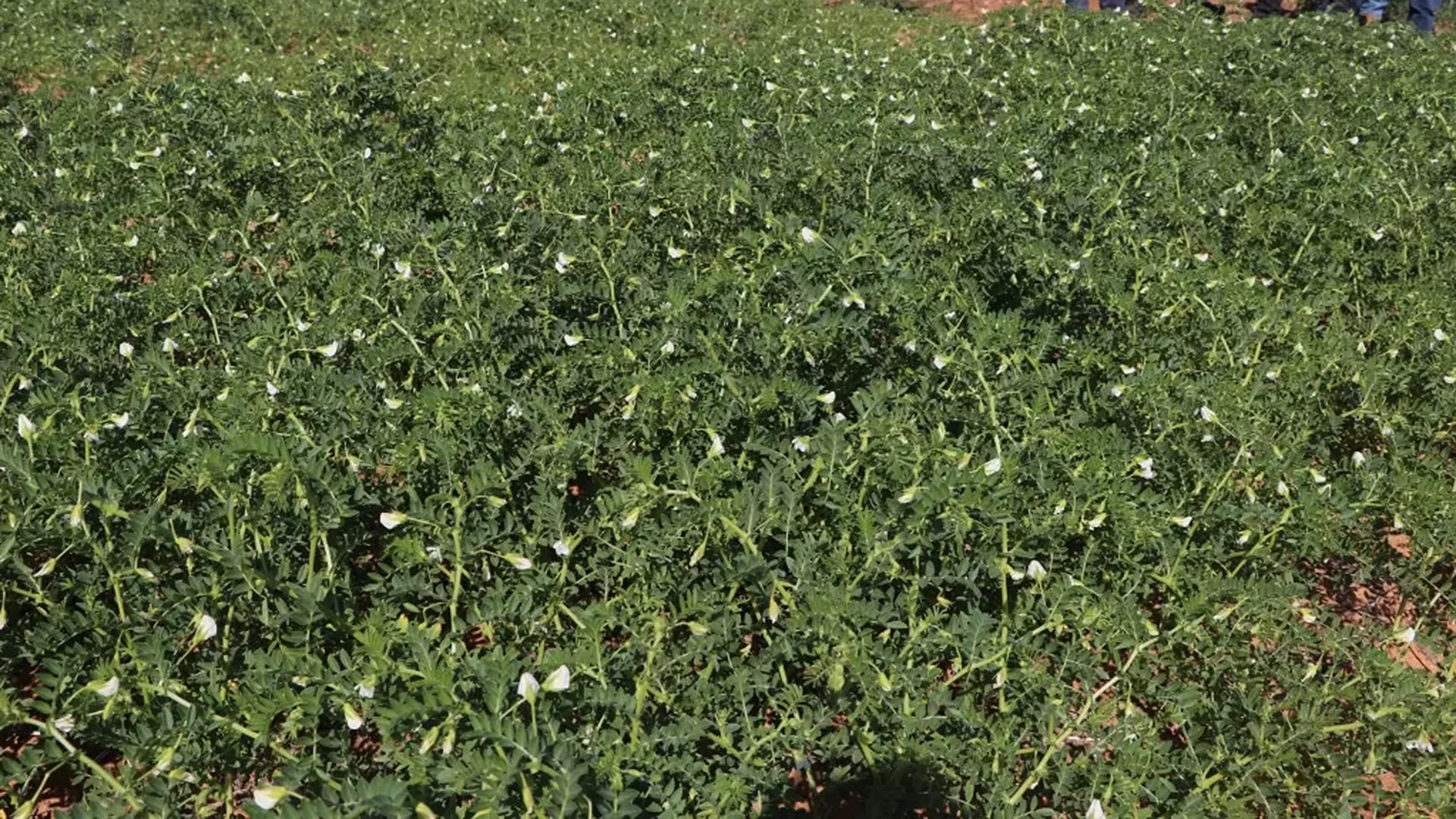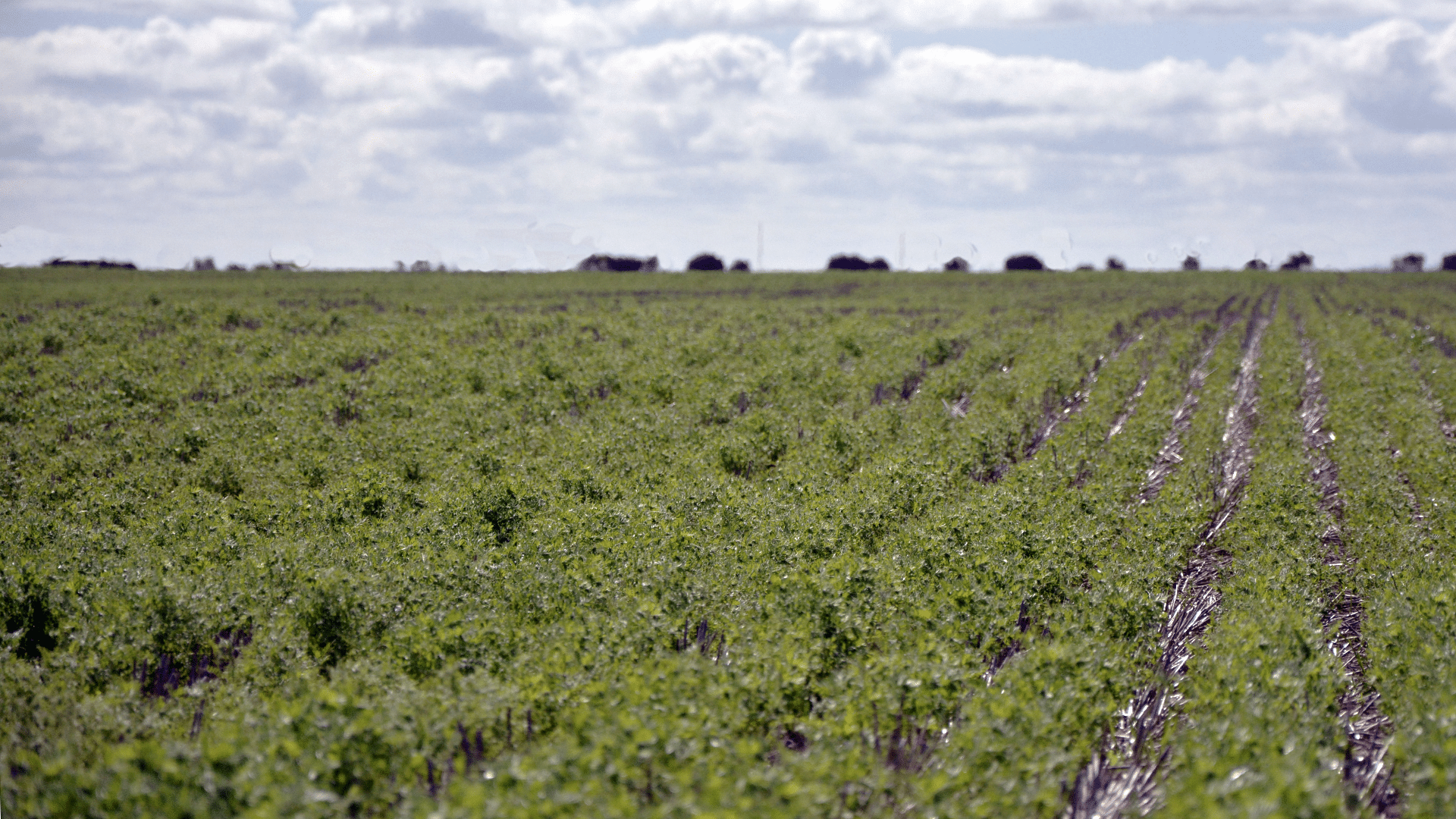START
FINISH
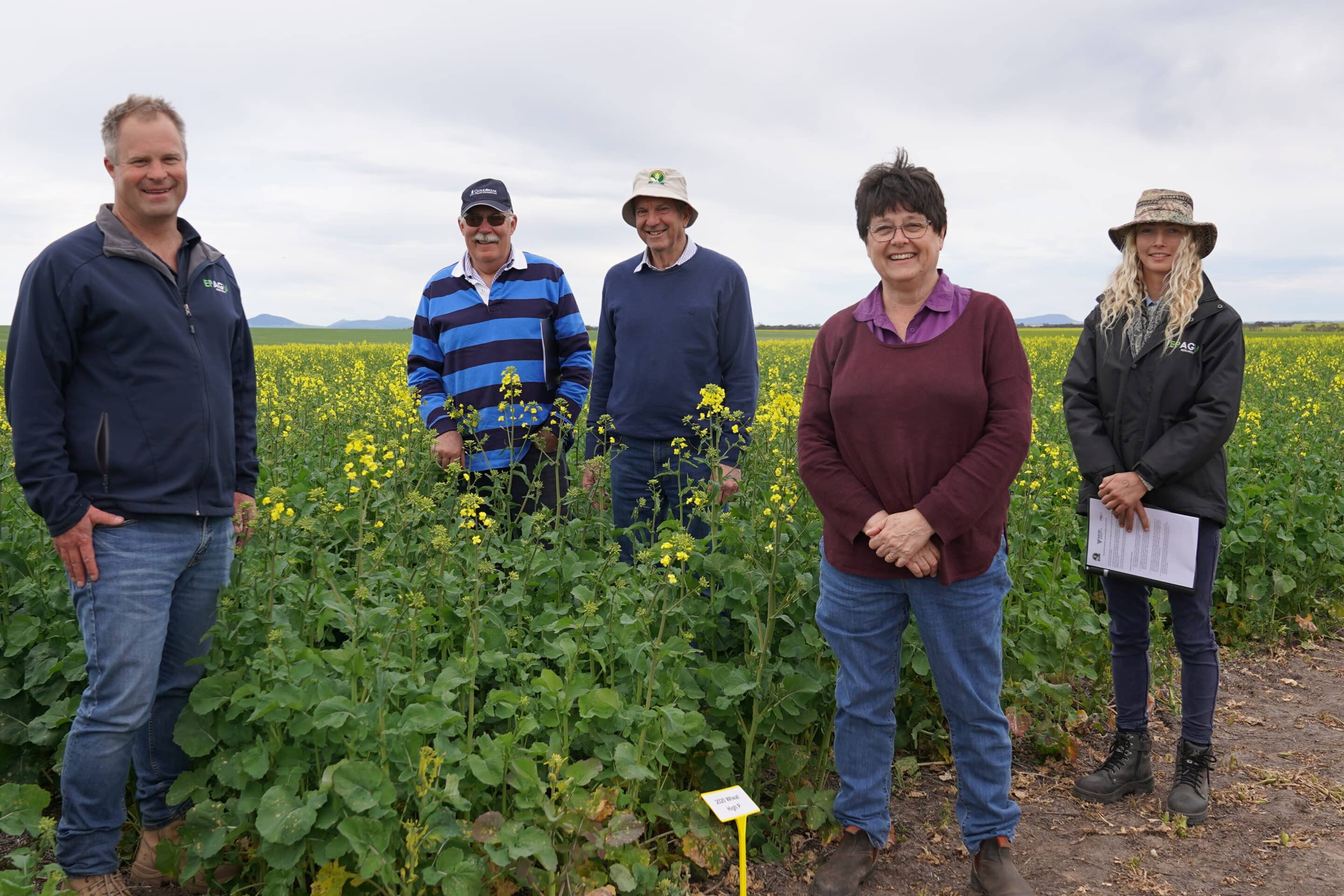
Summary
The maximum water limited yield of canola on the lower Eyre Peninsula was assessed at 14kg/mm in 2021. The project found nitrogen was the key driver of yield, phosphorous may be important in some situations and the role of previous crop, trace elements and sulphur were not as critical to push the canola yield frontier.
Background
Recent advancements in canola yield have been achieved through practices like early sowing, aligning cultivar phenology and sowing timing with critical flowering periods, hybrid variety development, and effective blackleg control using fungicides. Building upon these practices, a question emerged: How can canola yields on lower Eyre Peninsula be further enhanced?
Research Aims
The core objectives of the project were to:
- Determine the maximum achievable water limited yield of canola (kg/mm) in the lower Eyre Peninsula environment.
- Determine the relative significance of key canola yield drivers if disease and phenology are optimised, including crop sequence and nutrition. This will provide information to better target and refine input costs and improve the profitability of canola.
- Provide information to growers and advisors on lower Eyre Peninsula on the yield driving mechanisms and profitability of high production canola systems.
In The Field
Multi-year trial sites were established at two locations on the lower Eyre Peninsula, at a sandy loam over clay site at Yeltukka, west of Cummins, and an ironstone gravel sandy loam site at Coomunga, northwest of Port Lincoln.
The first year was a preparatory phase where wheat or pulses (lupins or faba beans) were sown and gypsum applied to certain plots. This was performed in 2020 and 2021 on different plots. Next canola was sown in 2021 and 2022. Finally in 2022 only, wheat was sown into the 2021 canola plots.
As well as the gypsum applied in the previous year, high levels of phosphorus, nitrogen, and trace elements were applied to some plots during the canola growing season.
Results
Pre-season nitrogen strategies had different outcomes in the two different years.
In 2021, district practice (148kg/ha N) was sufficient to meet the water-limited yield of 14kg/mm regardless of the strategy used in the previous year; district practice, high N, or high levels of N and other macro and micronutrients (“high everything”). In contrast, in 2022, a much higher rainfall season, yields were significantly improved if a high N strategy had been incorporated in the previous year – high N, high everything, or chicken manure. There was no difference in yield between the high N strategies, showing that it was the nitrogen, and not other elements, that was increasing the yield. This shows that district average practices would be sufficient to meet canola requirements in a 2021 season but not 2022.
There was no significant improvement in canola yield following a pulse crop (compared to wheat) in either season, despite differences measured in mineral N and plant available water. While N was found to significantly influence canola yields, the increase in mineral N is small by comparison to the amount of N applied through fertiliser.
High applications of trace elements and sulphur (applied as gypsum) did not influence canola yields above district averages where there was no diagnosed deficiency. Similarly high rates of phosphorus, above district averages, did not increase canola yield except for in one exception: in 2022, in ironstone soils, superphosphate broadcast before seeding increased yields by 0.33t/ha.
In 2021, canola yields reached 14kg/mm, reaching the theoretical potential of canola. In 2022, with higher rainfall, crops did not reach 14kg/mm, thought to be due limitations of photo thermal quotient (PTQ) during the critical period in that year.
Project Participants
EPAG Research Trust: Andrew Ware, Mark Saunders, Rhaquelle Meiklejohn, Rebekah Fatchen
Growers: Michael Treloar, Peter Russell
The Problem
There is limited information how the canola yield frontier can be improved in an economical way on Lower Eyre Peninsula.
The research
A series of multi-year experiments were conducted on lower Eyre Peninsula, focused on previous crop influence, stored soil moisture, and nutritional strategies, aimed at economical canola yield improvement.
More information
Andrew Ware, EPAG Research
T: 0427 884 272
E: [email protected]
EPAG Research – Agricultural Research on the Eyre Peninsula
Value for Growers
This project was able to determine that nitrogen was the key driver of yield, phosphorous may be important in some situations and that the role of previous crop, trace elements and sulphur were not as critical to push the canola yield frontier. Having high nitrogen levels in the soil prior to seeding was the biggest driver of canola yield in the high yielding season of 2022.
Project outcomes were communicated at a number of crop walks, field days, articles and a SAGIT podcast.

